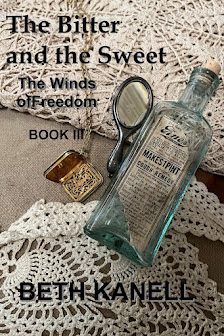A quick count suggests that MIDNIGHT AND BLUE is the 24th novel in the deeply admired Inspector Rebus series from Ian Rankin. Along with similar protagonists, like Michael Connelly's Harry Bosch, John Rebus has reached retirement age. How can a man whose life is framed by his investigative work manage the transition?
Shockingly, it seems Rebus will have to manage it in a dangerous prison, HMP Edinburgh, surrounded by criminals who have good reason to hate and threaten him. "Rebus felt hemmed in, not only by walls but bu the same daily faces too. He had visited the prison many times during his detective years — he recalled being shown the Hanging Shed, now demolished -- but this was different. The various smells were never going to be showered away. ... Prison, nick, jail, chokey, inside -- many names but only one game: incarceration."
There's only sparse explanation of how he's landed here with a life sentence, a result of bodily threatening a criminal who minutes later died of a heart attack. Clearly, Rebus's many slippery judgement calls and careless antagonisms of the past must have caught up with him as the courts ground him in their teeth. Protected briefly in solitary confinement, then pressed into the population of his old enemies and, of course, the antagonisms among them, it seems he's only surviving because the death that cost his freedom proved highly advantageous to gang leader Darryl Christie, who's offered to protect him (more or less).
Of course, Christie is powerful, menacing, and in Rebus's estimation, quite mad. So that protection immediately equals additional danger. Too bad there isn't time to sort it out any further before Rebus's miseries are compounded by a death inside the prison, and fresh expectations from both the investigators and the prison's governor that Rebus will help solve this murder. To do so would quickly mean his death at the hands of the other prisoners, though. Or would it?
It's no spoiler to admit that all the action of this very high-action crime novel takes place in one dangerous week of Rebus's incarceration. Walking with him through the seeming impossibility of crime-solving while balancing threats around him is fascinating and suspenseful, and Rankin provides plenty of aggressive and startling twists along the way.
 |
| British cover. |
MIDNIGHT AND BLUE will also satisfy readers who want a chance at the better side of human nature despite darkness and violence. Rankin's final acknowledgment shows he knows exactly what he's painstakingly built into this book: "I am grateful to staff and inmates (present and past) who spoke to me and allowed me to tour the facilities. I have taken a few necessary liberties, but I hope I have also managed to show that prisons are places where compassion and hope can be manifested on all sides."
In other words -- you might think you know the author, and the series, but this is a must-read to add to the experience. On my bookshelves, it's hanging around for a second delicious reading over the winter.
Oh yes, the publisher is Mulholland (aka Little, Brown); I like the British (Scottish) cover design better than the American.







